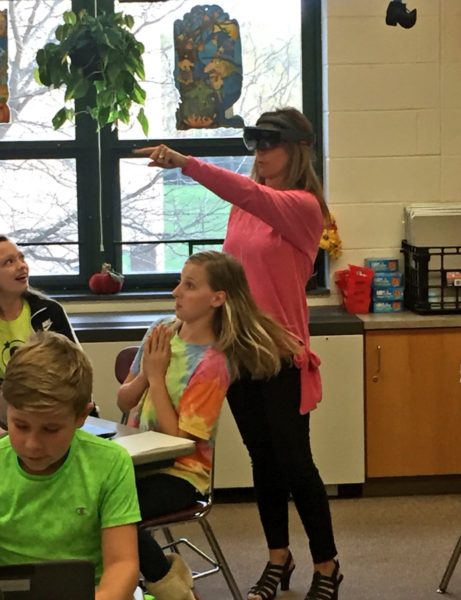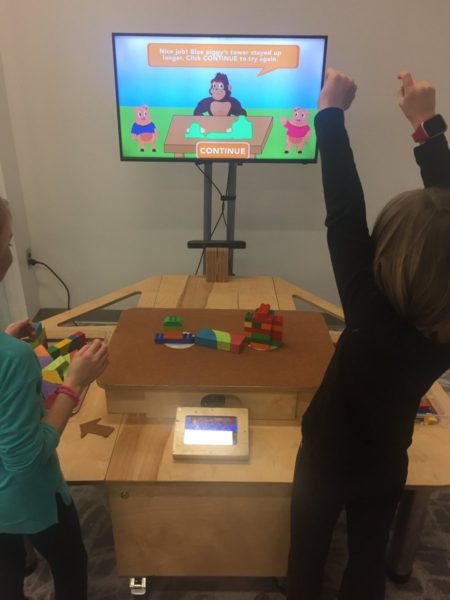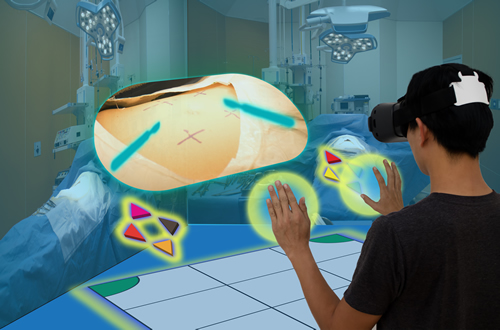Artificial intelligence (AI), mixed reality, and cognitive science research sound like science fiction for today’s classrooms, but this technology is available today. Innovation and technology are as integral to education today as chalkboards were in the past. And with the introduction of emerging, new, and proven technology-enhanced innovations, teachers are creating new ways of teaching and improving student learning, leading to a shift in pedagogy.
Here are three of the latest innovations our district is using.
Lumilo
Lumilo is a pair of mixed-reality smart glasses that provide teachers with continuous, real-time feedback about their students’ learning, metacognition, and behavior, as well as potential effects of their own teaching. These glasses leverage the wealth of real-time analytics that drive AI-powered educational software (but which normally remain hidden behind the scenes), converting them into a visual form that is readily accessible to and actionable by teachers.

In this picture, math teacher Dana Rongaus is using Lumilo in her math class.
When a teacher glances around her classroom, Lumilo allows her to see real-time analytics (in the form of icons) floating directly above each student’s head. The teacher can glance directly at a student or “click” on a student’s icon to see more detailed information about where and how that student might be struggling.

These are examples of what a teacher sees when glancing at her class through Lumilo.
NoRILLA
NoRILLA (novel research-based intelligent lifelong learning apparatus) is a patent-pending and award-winning mixed-reality system that combines physical and virtual worlds to improve children’s STEAM learning in an enjoyable and collaborative way. It is based on scientifically proven research at Carnegie Mellon University. NoRILLA’s specialized AI algorithm tracks what students are doing in the physical environment and provides personalized interactive feedback to children as they experiment and make discoveries in the real world.
EarthShake, the first educational game for the NoRILLA system, teaches early physics principles through hands-on learning. A table provides earthquakes and students make predictions about which tower will stay up longer. The supporting technology can detect how the towers fared during the quake, and the game’s cartoon gorilla gives the students appropriate feedback to understand the underlying principles.


These pictures are of children interacting with NoRILLA at Bright Horizons and Montour School District.
NoRILLA can be used to teach many STEAM concepts such as inquiry, balance and stability, geometry, symmetry, volume, ratio, scientific curiosity, and 21st-century critical-thinking skills.
MATHia
MATHia is an AI-powered platform for grades 6-12 that mirrors a human coach with more complexity and precision than any other math software. Built on more than 20 years of cognitive science research, it provides a one-to-one personalized learning experience for every student, regardless of skill level, meeting each student exactly where they are.
Unlike other software platforms that look at only whether a student got an answer right or wrong, MATHia analyzes every data point to understand the student’s process for solving the problem and identifies exactly which skills he needs to work on and what misunderstandings may have led to the error.
Teachers have access to reports that give them insight into class and individual students’ progress. The data leads to tangible action, such as determining how many students are mastering standards, placing students into smaller learning groups, or facilitating teacher-student conferencing. The APLSE Report uses predictive analytics to look at every step the student has taken and predict, very accurately, where they’ll end up at the end of the year. Teachers can then adjust instruction to get students back on track before it’s too late. Leadership Reports give administrators ongoing insight into student, classroom, school, and district progress toward learning goals.
MATHia, which is used by over 500,000 students all over the country, is often used as part of the Carnegie Learning Blended Math Solution, which includes consumable textbooks for group learning that give students a deeper level of conceptual understanding of mathematics.
Innovation will always be part of learning. Recent and emerging developments in technology are transforming the way we think and learn. Access to and availability of data increases by the second. With the shift from the industrial revolution to the information age, students need access to more than computers and high-speed internet in schools. Today’s schools can—and should—provide access to cutting-edge technology that provides the opportunity to learn specialized skills and knowledge in their classrooms, without the physical presence of a subject matter expert, but with their teacher as the guide.
- 5 ways school districts can create successful community partnerships - November 21, 2024
- Trump picks Linda McMahon to lead, and possibly dismantle, Education Department - November 21, 2024
- 6 ways to create engaging elementary learning spaces - November 20, 2024


